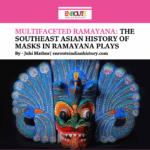The term “ek onkar, (ੴ) “, which begins the Aad Guru Granth Sahib’s Commencing Verse (which is additionally referred to as the Mool Mantra), is a unique and original symbol coined by Guru Nanak Dev Ji, the first of Ten Gurus and the founder of Sikhism. Guru Nanak Dev Ji was born in 1469 AD in the village of Rai Bhoi di Talwandi, which is today known as Nankana Sahib. It is located in Pakistan’s Shekhupura district, near Lahore. Guru Ji who was raised in a Hindu home and was familiar with Islamic traditions, had a deep understanding of spirituality, and his teachings were original and continue to be relevant and universal to this day.
Ik Onkar
Sat Nam
Karta Purkh
Nir Bhau, Nir Vair
Akaal Moorat
Ajooni Saibhang
Gur Parsaad
There is only one God,
Truth is His name,
The Creator,
Without fear Without hate,
Immortal Beyond births and deaths,
Self-Illuminated, the Enlightener.
-Mool Mantra, (Guru Granth Sahib)
His teachings articulated through exceptional poetry, advocate equality and oneness, fraternity and peace. He established a set of guiding principles that he believed lead to a spiritually fulfilled existence, and millions of Sikhs worldwide adhere to them (Government of Punjab, 2019).

During the 15th century, it was discovered that the practice of conversion to Islam existed and was carried out under the authority and command of Pathans. As a result, several Hindu saints sought refuge in the forest near the town. Guru Nanak Dev Ji would receive rudimentary schooling from one of the saints, Pandit Gopal, and practice deep meditation. Mehta Kalyan Rai (Guruji’s Father) took Guru Nanak Dev ji to the village Maulvi when he was eleven years old to teach him Persian, the language of the court. Maulvi also taught him accounting and many other skills. Thus, the teachings of Sikhism resonate and are imparted from the two religions, Hinduism and Islam. The traces of Guru Nanak Devji can be found across many states in India as well as several countries such as Saudi Arabia (Mecca-Madina), South Africa, Canada, etc (Kohli, 1969).
Furthermore, Guru Ji’s travels began because he refused to follow Hindu conventions. Sri Guru Nanak Dev Ji journeyed extensively across India and West Asia, primarily on foot, with his lifelong companion rabab-strumming minstrel Bhai Mardana. Udasis were spiritual excursions rendered to disseminate the prophetic word of the Eternal Creator.
Guru Nanak Dev ji’s Udasis
The term “Udasi” refers to the journeys endured by Guruji in Sikh history. Shri Guru Nanak Dev Ji’s initial Udasi drove him in four cardinal directions starting from his place of residence in Sultanpur Lodhi followed by other parts of North India such as portions of Uttar Pradesh, Bihar, Madhya Pradesh, north-eastern Pakistan, North-East India, and some parts of Bangladesh. Such Udasis were endured in order to spread the one true message of the Almighty God and to establish Truth and peace amongst his preachers. the main target of Guru Ji’s arduous journey was to meet the religious leaders of the major faiths of his time, intending to communicate and exchange views on matters of faith while utilizing characteristics prevalent to most faiths to convey his personal beliefs promoting the Unity of God, the solidarity of mankind, and the futility of prevailing futile rituals in solving the issues that plagued individuals (Singh, 2010). Guru Ji would usually travel by foot to such extreme locations which were tedious but, led to the spread of Sikhism to all parts of the world. The second Udasi was to the Southern regions of the subcontinent. Guru ji’s second Udasi commenced in Sultanpur Lodhi and headed him across Rajasthan, Uttar Pradesh, sections of Tamil Nadu, Kerala, and Karnataka, as well as Goa, Maharashtra, and Gujarat. It is believed that he traveled to the northern parts of Sri Lanka as well (Government of Punjab, 2019). For Guru Ji, the notion and idea to spread the word of god were more important and imperative than the rituals and conventions practiced by the orthodox religious leaders. Since his birth, Guru Ji was quite different from other children of his age. He understood and preached spirituality to be different from that of religion and therefore, refused to adorn the sacred thread (Janeyoo) as he described it to be temporary and perishable (Bigger, 2015).

Shri Guru Nanak Dev Ji embarked on his third Udasi (1514-1516) journey from Kartarpur, visiting areas of the Himalayan region including Jammu and Kashmir, Ladakh, and Tibet. Sri Guru Nanak Dev Ji’s ideas and philosophy developed from a highly divided societal setting steeped in superstition and intolerance. He desired to free individuals from their medieval mentality and duplicity. He opposed erroneous rituals and spoke out forcefully and persuasively against caste, creed, and gender injustice. He also underlined the need of being a responsible, involved householder while discouraging austerity as a path to spiritual development. Furthermore, Shri Guru Nanak Dev Ji traveled to Pakistan, Arabia, and West Asia during the fourth Udasi (1518-1521) to visit Mecca and Medina, Baghdad, Jerusalem, Afghanistan, and other key religious sites and shrines. In such journeys embarked by Guru Ji, he would spend most of his time lodging in sacred regions such as temples, Madrassa, and other important shrines. Since Guru Ji traveled majorly in the Northern regions, the state of Punjab (present-day India and Pakistan) is populated by Sikhs and the Khalsa Pants. During his travels Guru Ji encountered many sorts of men and women, some rich and poor, literate or illiterate, diligent, and certain cruel or dishonest individuals, however, Guru Ji never turned a blind eye to any person even though some were dangerous criminals (Singh, 2010). To this present day, there are many Gurdwaras constructed at the important places where Guru Ji rested or preached, for example, Guru Sri Ber Sahib is established in Sultanpur Lodhi where he used to reside with his family.
Bibliography:
- Government of Punjab. Guru Nanak’s Blessed Trail – Punjab, India, 2019, punjabtourism.punjab.gov.in/pdf/guru-nanak’s%20-blessed-trail.pdf.
- Kohli, Dr. Surinder Singh. “Travels of Guru Nanak .” Indianculture.Gov.In, 1969, www.indianculture.gov.in/ebooks/travels-guru-nanak.
- Singh, Kharak. “Guru Nanak: Prophet with a Difference .” Guru Nanak Dev University, Gndu.Ac.In, 2010, online.gndu.ac.in/pdf/prophet.pdf.
- Bigger, Stephen. Introduction to Sikhism – Core, 2015, core.ac.uk/download/pdf/49786.pdf.



















